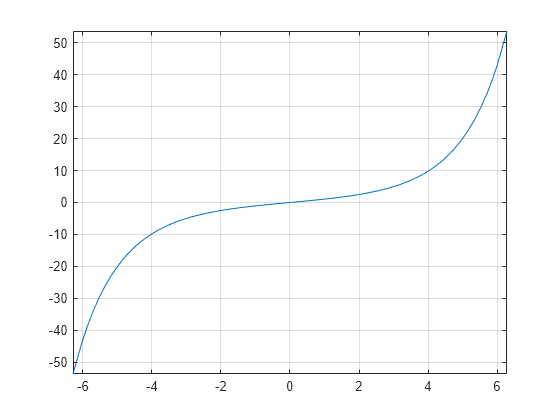sinhint
Hyperbolic sine integral function
Syntax
Description
sinhint( returns the hyperbolic sine integral
function of X)X.
Examples
Hyperbolic Sine Integral Function for Numeric and Symbolic Arguments
Depending on its arguments, sinhint returns
floating-point or exact symbolic results.
Compute the hyperbolic sine integral function for these numbers. Because these
numbers are not symbolic objects, sinhint returns floating-point
results.
A = sinhint([-pi, -1, 0, pi/2, 2*pi])
A = -5.4696 -1.0573 0 1.8027 53.7368
Compute the hyperbolic sine integral function for the numbers converted to symbolic
objects. For many symbolic (exact) numbers, sinhint returns
unresolved symbolic calls.
symA = sinhint(sym([-pi, -1, 0, pi/2, 2*pi]))
symA = [ -sinhint(pi), -sinhint(1), 0, sinhint(pi/2), sinhint(2*pi)]
Use vpa to approximate symbolic results with floating-point
numbers:
vpa(symA)
ans = [ -5.4696403451153421506369580091277,... -1.0572508753757285145718423548959,... 0,... 1.802743198288293882089794577617,... 53.736750620859153990408011863262]
Plot Hyperbolic Sine Integral Function
Plot the hyperbolic sine integral function on the interval from -2*pi to 2*pi.
syms x fplot(sinhint(x),[-2*pi 2*pi]) grid on

Handle Expressions Containing Hyperbolic Sine Integral Function
Many functions, such as diff,
int, and taylor, can handle expressions
containing sinhint.
Find the first and second derivatives of the hyperbolic sine integral function:
syms x diff(sinhint(x), x) diff(sinhint(x), x, x)
ans = sinh(x)/x ans = cosh(x)/x - sinh(x)/x^2
Find the indefinite integral of the hyperbolic sine integral function:
int(sinhint(x), x)
ans = x*sinhint(x) - cosh(x)
Find the Taylor series expansion of sinhint(x):
taylor(sinhint(x), x)
ans = x^5/600 + x^3/18 + x
Input Arguments
More About
References
[1] Gautschi, W. and W. F. Cahill. “Exponential Integral and Related Functions.” Handbook of Mathematical Functions with Formulas, Graphs, and Mathematical Tables. (M. Abramowitz and I. A. Stegun, eds.). New York: Dover, 1972.
Version History
Introduced in R2014a